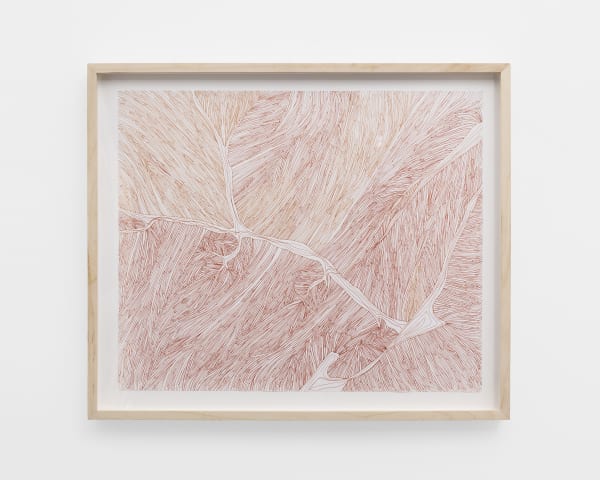-

Installation view of La luz proviene de Ahí, Campeche, Mexico City. Photo: Ramiro Chaves
-

Limítrofe, 2020
Video monocanal 5’ 37’’
Edición de 3 + 1 AP
-

Pedestal para persona digna de ser recordada, 2021
Cera de abeja, damar, pigmentos, acero inoxidable
100 x 109 x 13 cm
-

La luz proviene de ahí, 2021
Oil on paper
70 x 50 cm -

Dentro, 2021
Óleo sobre papel
70 x 50 cm
-

Cantando himnos en el jardín atrás de Walgreens, 2020
Acrylic, synthetic hair
200 x 150 cm -
Paloma Rosenzweig
Similarly, Paloma Rosenzweig’s work deals with complicated themes like inadequacy, religion, death, medicine and the body. In her latest series, titled Soft Bodies, Rosenzweig fabricates hand-woven wool sculptures that represent the inner organs and bones of the human body—a heart, brain, teeth, or vertebrae. By weaving together her work, the artist mimics involuntary bodily functions—such as breathing, walking, and even the heartbeat—and slowly incorporates a rhythmic, performative, and almost-meditative process. As a whole, this body of work comments on the medical act of opening bodies to heal or to explore, critiquing the imposed intimacy that exists in these situations.
-
Image credits:
All digital files Ramiro Chaves @whitebalancemx.








